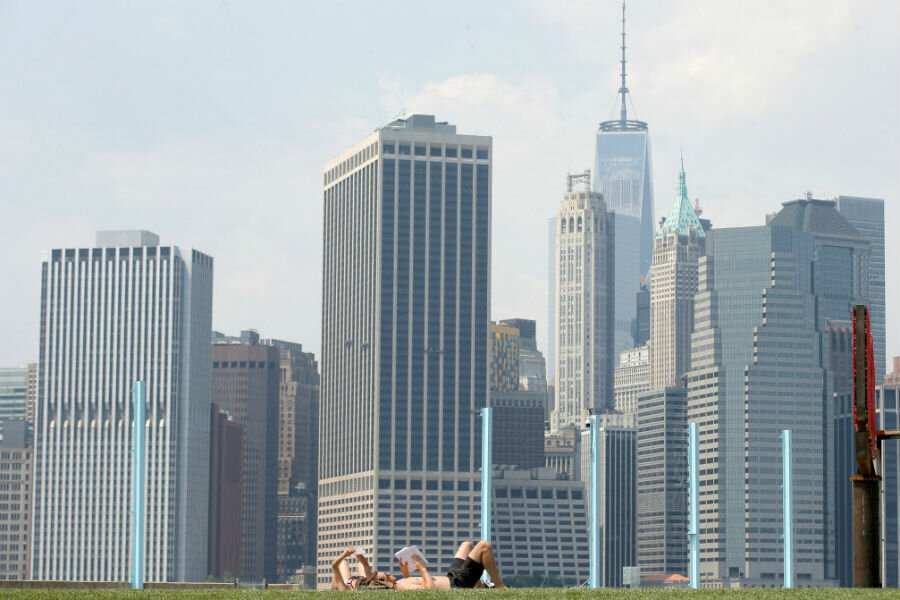Why cities of the future could be made of bone
Loading...
As the world's population continues to grow and more people choose to live in urban areas, experts must figure out how to accommodate them in an environmentally-friendly way.
A team of researchers from the University of Cambridge offers one possible solution: replacing concrete and steel, which together account for about 10 percent of the world's total greenhouse gas emissions, with bone.
"I fly back and forth a lot between the UK and the US, and I'd been harbouring a lot of guilt about the effect that had on my carbon footprint – I'd always assumed, as many of us do, that air travel is a huge contributor to carbon emissions," Michelle Oyen, a bioengineer with Cambridge's Department of Engineering, said in a statement.
"But," she continued, "the truth is, while the emissions caused by air travel are significant, far more are caused by the production of concrete and steel, which of course is what most cities are built from."
Since the majority of existing building standards have been designed with concrete and steel in mind, many researchers in recent years have focused their efforts on producing and using steel and concrete in more energy-efficient ways, rather than seeking out alternative materials. But Dr. Oyen and her team decided to go another route by creating new materials entirely.
"What we're trying to do is to rethink the way that we make things," Oyen said. "Engineers tend to throw energy at problems, whereas nature throws information at problems – they fundamentally do things differently."
With funding support from the US Army Corps of Engineers, Oyen and her team of researchers are creating small samples of artificial bone and eggshell by "templating" hydroxyapatite, a mineral form of calcium apatite, directly onto a substrate of natural collagen.
The samples can be produced at room temperature, and the process requires very little energy.
Artificial bone and egg shells make good building materials due to their makeup of proteins and minerals, researchers say. The proportions of protein and mineral are approximately equal in bone, with the mineral providing stiffness and hardness and the protein giving it toughness and resistance to fracture. Egg shells, in comparison, are about 95 percent mineral and 5 percent protein.
Natural bone also has the ability to self-heal. While artificial bone doesn't yet have that capability, researchers hope to develop it soon.
If bone-based building materials do catch on, they will likely catch on slowly, as the road to greener cities is paved with challenges.
The construction industry, Oyen explains, is a "very conservative one," and "constructing buildings out of entirely new materials would mean completely rethinking the whole industry."
However, she adds, "If we’re going to make a real change, a major rethink is what has to happen."
In the meantime, another environmentally-friendly alternative to steel and concrete is wood. While buildings made of timber have typically stayed lower to the ground due to concerns about flammability, engineers have begun to come up with ways to safely build wooden skyscrapers. The tallest one yet is a student residence at the University of British Columbia, which stands 18 stories tall and will be completed in September 2017.








